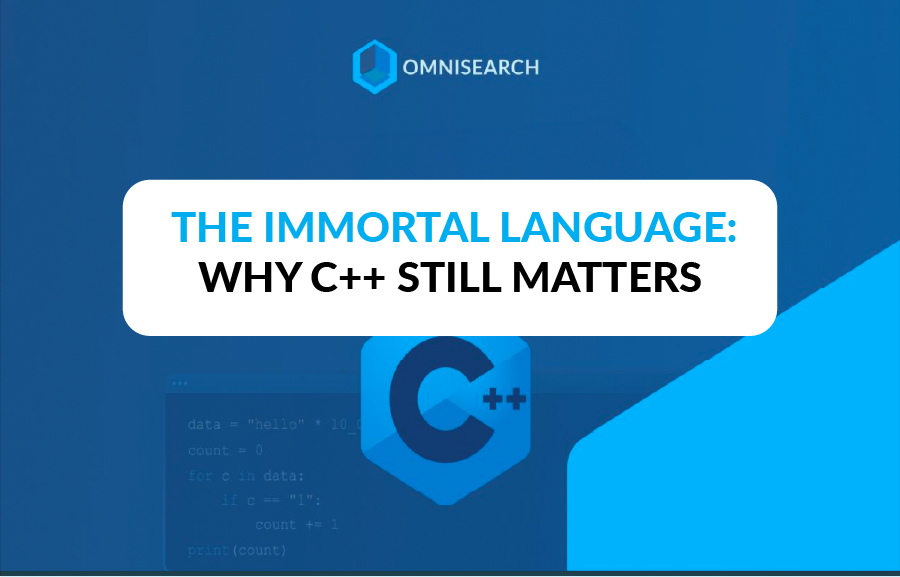How Omnisearch can outperform Google in companies’ search use cases
No items found.
Published:
August 20, 2024
Topic:
Deep Dive

The need for advanced search in companies
Online platforms that possess custom site search have several advantages - improved customer experience, increased site traffic, better efficiency, etc. Today many websites possess an embedded search bar as part of their design, and visitors are used to the UI. According to Forrester research, 43% of visitors that use the search tool to find a product or information - will convert into a lead.
As an example, online learning platforms that offer hundreds of courses and have thousands of users, by using a site search function can speed up the company’s growth - without extra developer effort. Omnisearch’s focus is educational and media portals - we offer a simple and effective tool for whole site search of all types of content – audio, video, and text (including PDFs). Students around the world benefit greatly from our tools that transcribe audio and video files into text and perform keyword-based content searches, mapping results to exact places where they occur.
Using the Omnisearch search bar – your clients are able to search, find, and buy with ease, so you will get increased revenues. By using the site search on your website - customers are expressing their intents, so you can analyze their search data. Then you can perform site search analytics and plan for strategic moves. Also – you can provide product recommendations and a personalized (customer-centric) experience on the site.
Google’s site search solution for companies
For companies - Google offered its Google Site Search (GSS), a paid service for improved website search. However, the tool has been discontinued in 2018 and is no longer supported. By design, the tool assumed that all websites need to apply the same relevance as Google.com, and it provided the same algorithm for all websites. Thus - it didn’t offer a lot of control over relevance in search results. In practice, two websites can rarely have the same relevancy algorithm, as every website is unique. GSS users could set up search relevancy in three ways - by keywords, scores, and weighted labels. But those features are not able to improve your global site rankings - instead you could negatively impact global results relevancy while fixing up specific query results.
GSS offered several built-in search layouts and allowed the users to choose one for their website. But the users’ needs go further than a simple integration - they need to have the same UX patterns across all website pages, including the search results page. Awkwardly - GSS only provided an API to display the results, and the whole UI rendering should happen on the user’s end. Since GSS used the original Google crawling method, the users couldn’t control the refresh rate of their pages. Consequently, it took several days for users’ search results to reflect the latest content on their website, and up to one day when using the paid on-demand indexing API.
GSS offered a single way to categorize users’ content, and purify the end-users search based on the categories. To define the categories, users should define them via the page’s meta-data or by creating an annotation file. However, this provides users with limited adjustment capabilities and it’s almost impossible to create a flexible search experience for site visitors. To solve this, Omnisearch provides you with a full-feature faceted-search experience, allowing you to define all categories you want to use for the refinements. You can build a custom refinement sidebar in a matter of minutes.
GSS was notably interesting because it was the first major effort to apply consumer-facing technology to the companies. There were good and bad aspects to it. Google didn't try to implement GSS as a server; the tool was spidering users’ websites, indexing what it saw, applying a simple algorithm, and delivering results. In the current era of complex online platforms, Google’s appliance appears to be inadequate for advanced use cases (see Real Story Group analysis).

Omnisearch features and benefits for companies
Omnisearch possesses some unique features that can significantly improve the functionality of business platforms (website), and increase overall customer satisfaction. Some of the main features are listed as follows.
Search filtering and faceted search filtering
Both Omnisearch and Google Search tools can enhance the search results by search filtering and faceted search filtering. Filtering means including specific areas from some domain in the search results and excluding others. E.g., you could use a filter that includes the blog posts in the search results. Faceted filtering denotes a search where the user can narrow down the search results by multiple filters that affect each other. An example of faceted search filtering is to narrow down the search to blog posts published on a specific date – by multiple authors.
Indexing PDF-s, Word docs, audio and video files
Omnisearch can index PDFs and doc, Docx, ppt, pptx Microsoft Office documents. This is very useful in e-commerce (product descriptions) and e-learning platforms (class materials). For indexing of audio/video files – read the section below.
Indexing behind a login
Omnisearch can crawl and index content that requires a login and password just like Google Search Appliance. However, there are some differences between Omnisearch and GSA on the accessibility of the indexed content. According to Google - GSA checks whether the user performing the search is authorized to view each document before it displays results. This means that for the user to search the crawled and indexed content behind a login – s/he has to be logged into the authorized area of the website. Omnisearch differs from GSA so that our service resides on a server unlike GSA, which is just an online tool. So, our tool provides filtered access to the authorized content.
Advanced search/ navigation within audio/ video content
Our audio transcription tool puts live audio/video lectures into written form, helping the users to catch up if they miss a topic. For the video lectures - our tool finds exact spots in the video (where a given keyword appears), so the users can quickly navigate to the desired sequence. They can search for information based on topics or specific keywords, then rewatch that section of a lecture, as well as read the transcription. One of the key differentiating features of Omnisearch is that it provides an API that can be used to integrate video search into your own applications. Search API is a direct way to integrate modern search capabilities into your website or application.

Conclusion: why Google failed and Omnisearch will succeed?
The practice has shown that Google's internet-inspired ranking algorithm often doesn't work well in cluttered enterprise information. It is obvious that website search is not the same thing as enterprise search. So we have worked beyond Google, and thus Omnisearch created a search well-suited for individual companies and businesses.
Enhanced customer experience
In order to be successful, we are focused on usability, i.e. enhanced consumer digital experience. A good and customized search tool can provide quick search results and great discovery experience that allows users to filter results, browse different categories of content, and even recommend the results they will find. A good search experience makes the users regular visitors of your website and very probable leads.
We can customize your search
GSA was based on in-browser configuration, rather than true customization to modify search behavior. That works for simpler scenarios, but for a big company - where customers have more complex security needs and specific search demands - you need to suit better for the clients. There are also examples of cloud-based solutions, especially multi-tenant SaaS offerings; in theory enterprises are quite open to this model, but in practice, they also need more control over the environment. It is part of the old product-vs-platform debate.
We are dedicated to our customers
Google uses resellers and channel sales models – and by this, it stays outside the shiver of the enterprise demands. In most cases - they fulfill just the common needs, which for email is working well, but not for the rest of G Suite tools. This has led to limited Google's usefulness for enterprise scenarios (especially for the custom site search).
Search on an application level
Enterprise customers do not expect one-size-fits-all enterprise search, instead, they need customized search applications embedded into specific user journeys. If the user is searching within the HR portal, s/he doesn't need to see sales data in the index. One of the major achievements of the past decade is the improvements in intra-application search, driven largely by the rise of the enterprise ecosystems.
At Omnisearch, we offer a simple and effective tool for a complete internal search of all types of content – audio, video, and text (including pdf-s). The focus of the Omnisearch tool is e-commerce, educational, and media portals.
Omnisearch provides prioritized support for migrating from GSA for enterprise customers. Planning and executing the migration can take several weeks and Omnisearch’s support team works closely with you to make sure the search is deployed on time and delivers relevant results. Omnisearch also provides tech and customer support after the migration. Feel free to contact us for a quick demo on how to improve your e-learning platform.






